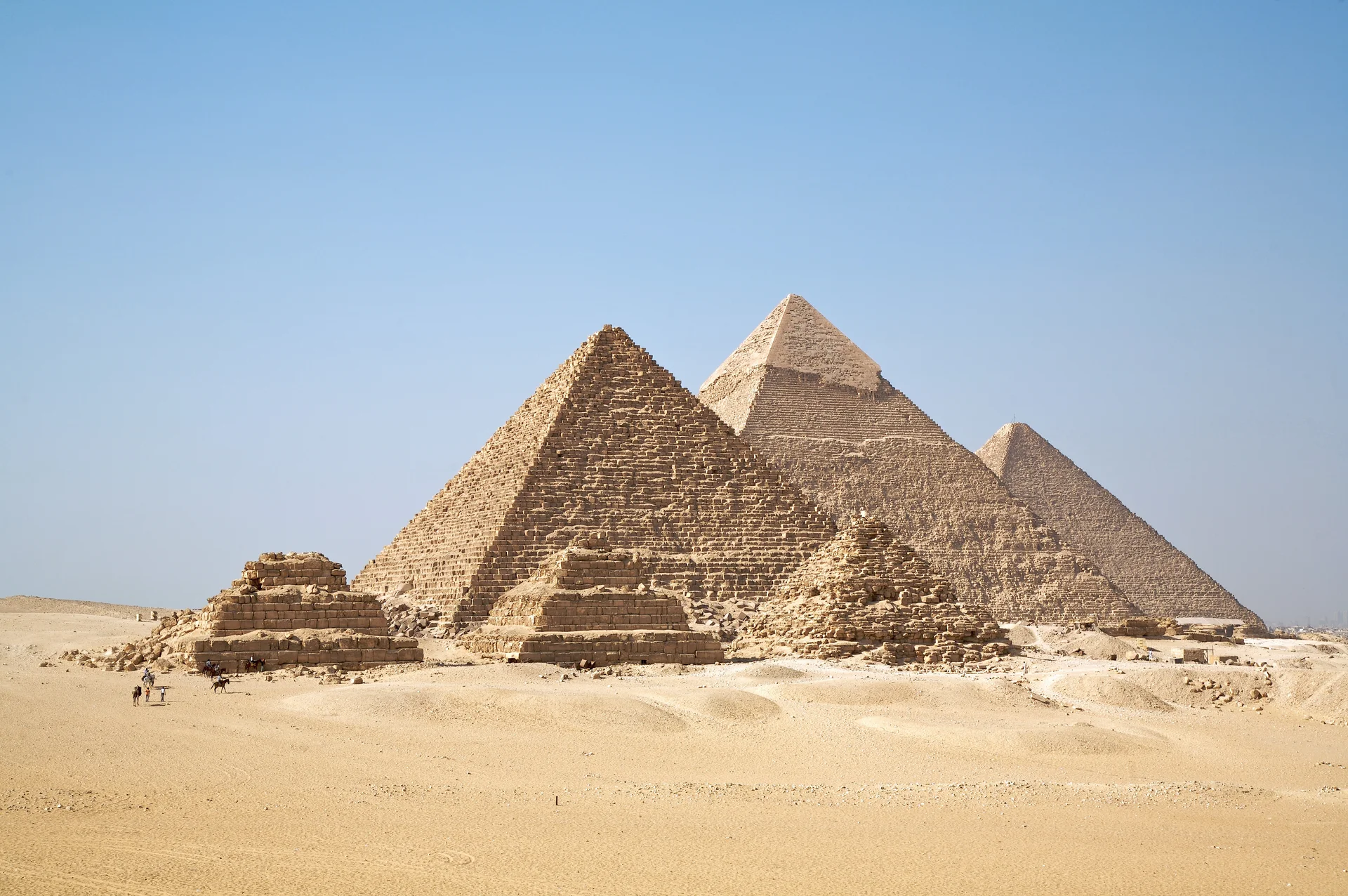
Memphis and Its Ancient Pyramids of the Pharaohs
Egypt's Sacred Landscape from Giza to Saqqara Tombs
About This Site
Memphis and its Necropolis represents humanity's most extraordinary concentration of monumental funerary architecture, stretching 30 kilometres along the Nile's west bank with over 38 pyramids documenting 3,000 years of Egyptian civilisation. From Saqqara's revolutionary Step Pyramid—the world's first monumental stone building—through Dahshur's experimental bent and smooth-sided pyramids, to Giza's iconic monuments including the last surviving Wonder of the Ancient World, this vast archaeological landscape chronicles the evolution of pyramid construction and royal burial practices. Centred on Memphis, ancient Egypt's capital for millennia, the necropolis demonstrates extraordinary engineering achievement, astronomical knowledge, and organisational capacity through monuments that have inspired awe for over 4,500 years.
Why It Matters
This necropolis demonstrates outstanding universal value as a masterpiece of human creative genius spanning three millennia, providing unique testimony to ancient Egyptian civilisation through pyramid evolution from stepped to true forms. It represents exceptional funerary architecture illustrating a significant stage in human history through innovative construction, astronomical alignment, and Memphis as Egypt's political centre.
Monuments Across the Sacred Necropolis
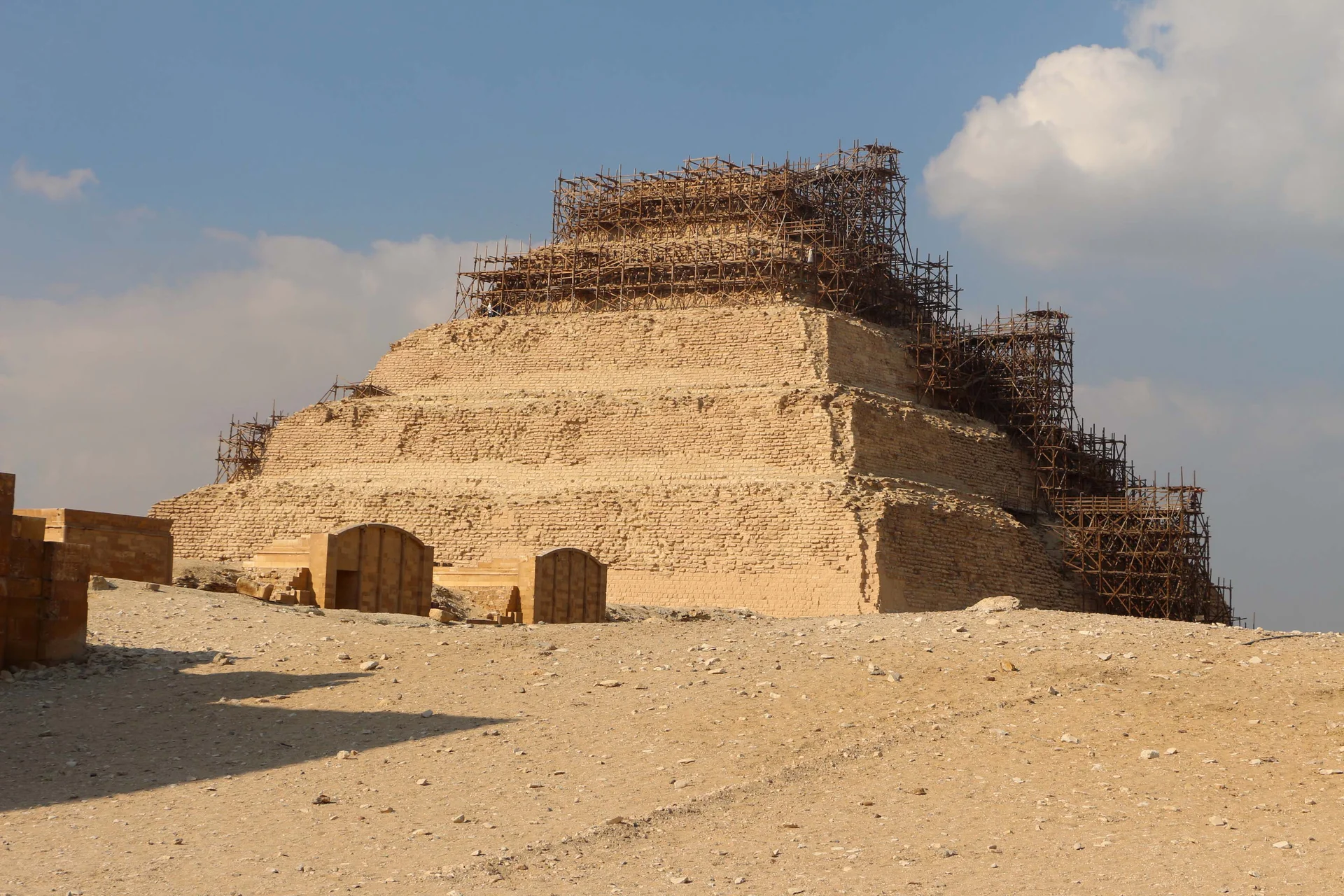
Step Pyramid of Djoser (Saqqara)
Experience humanity's first monumental stone building, constructed c. 2670 BCE for Pharaoh Djoser by architect Imhotep. This revolutionary structure rises 62 metres through six distinctive steps, marking the pivotal transition from mud-brick mastabas to stone construction. The vast complex—covering 15 hectares within limestone enclosure walls—includes ceremonial courtyards, chapels, and dummy buildings demonstrating architectural experimentation. Underground chambers feature stunning blue faience tiles, the world's oldest known wall decorations. Visiting Saqqara first provides essential context for understanding pyramid evolution, revealing how Imhotep's innovation established principles guiding all subsequent construction. The site's tranquillity allows contemplative appreciation of this groundbreaking achievement launching Egypt's pyramid age.
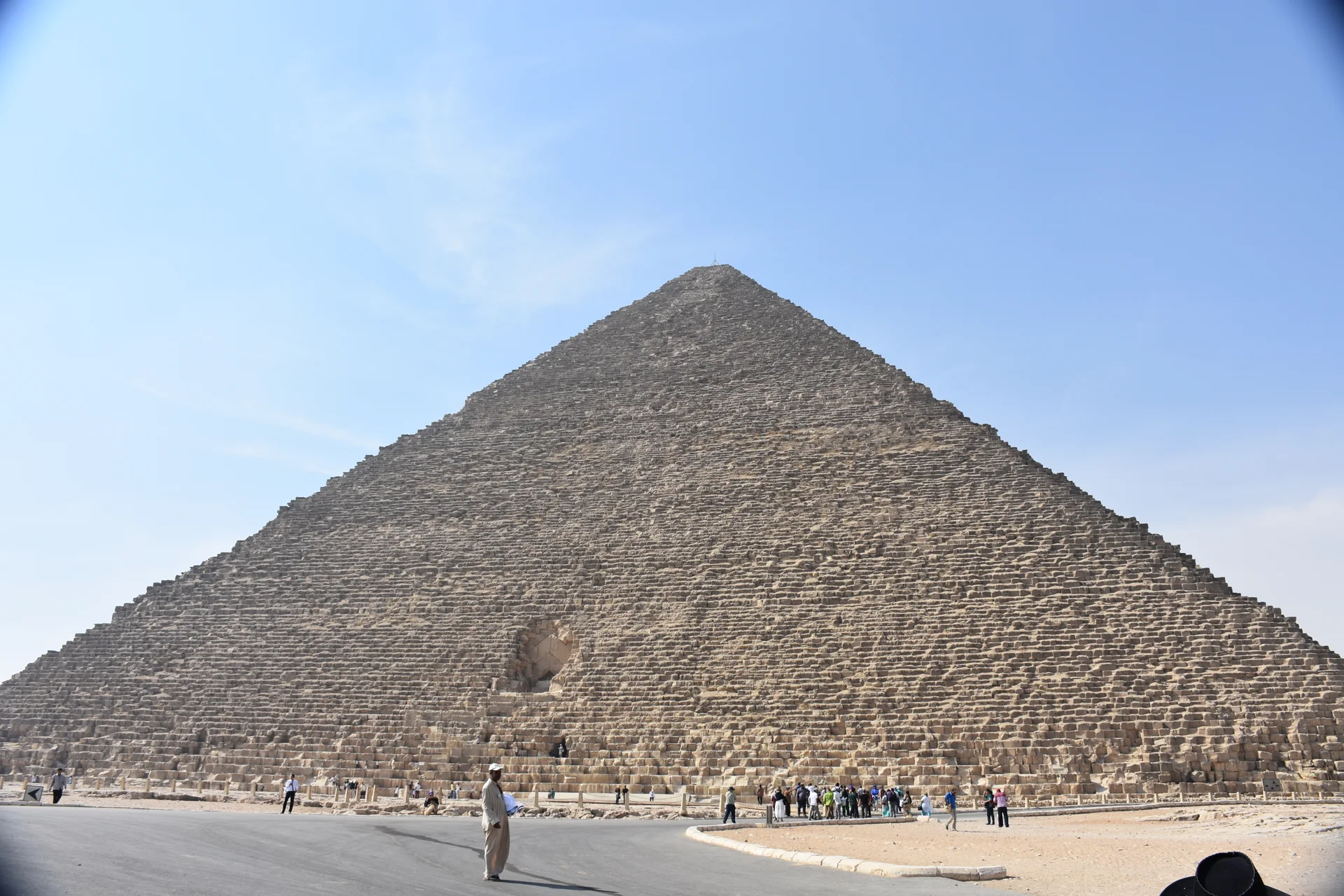
Great Pyramid of Khufu (Giza)
Stand before the largest pyramid ever built, constructed c. 2580-2560 BCE for Pharaoh Khufu after centuries of refinement. Originally 146.6 metres tall with 2.3 million limestone blocks, this masterpiece remained the world's tallest structure for 3,800 years. The engineering precision astounds specialists—blocks fitted with millimetre accuracy, aligned to true north with 99.9% precision, incorporating mathematical proportions encoding π and the golden ratio. Inside, the Grand Gallery's corbelled ceiling demonstrates sophisticated knowledge whilst the King's Chamber features massive granite beams transported 800 kilometres from Aswan. The complex includes queens' pyramids, boat pits, and causeways revealing elaborate funerary planning. As the only surviving Ancient Wonder, it creates unparalleled connection to humanity's earliest achievements.
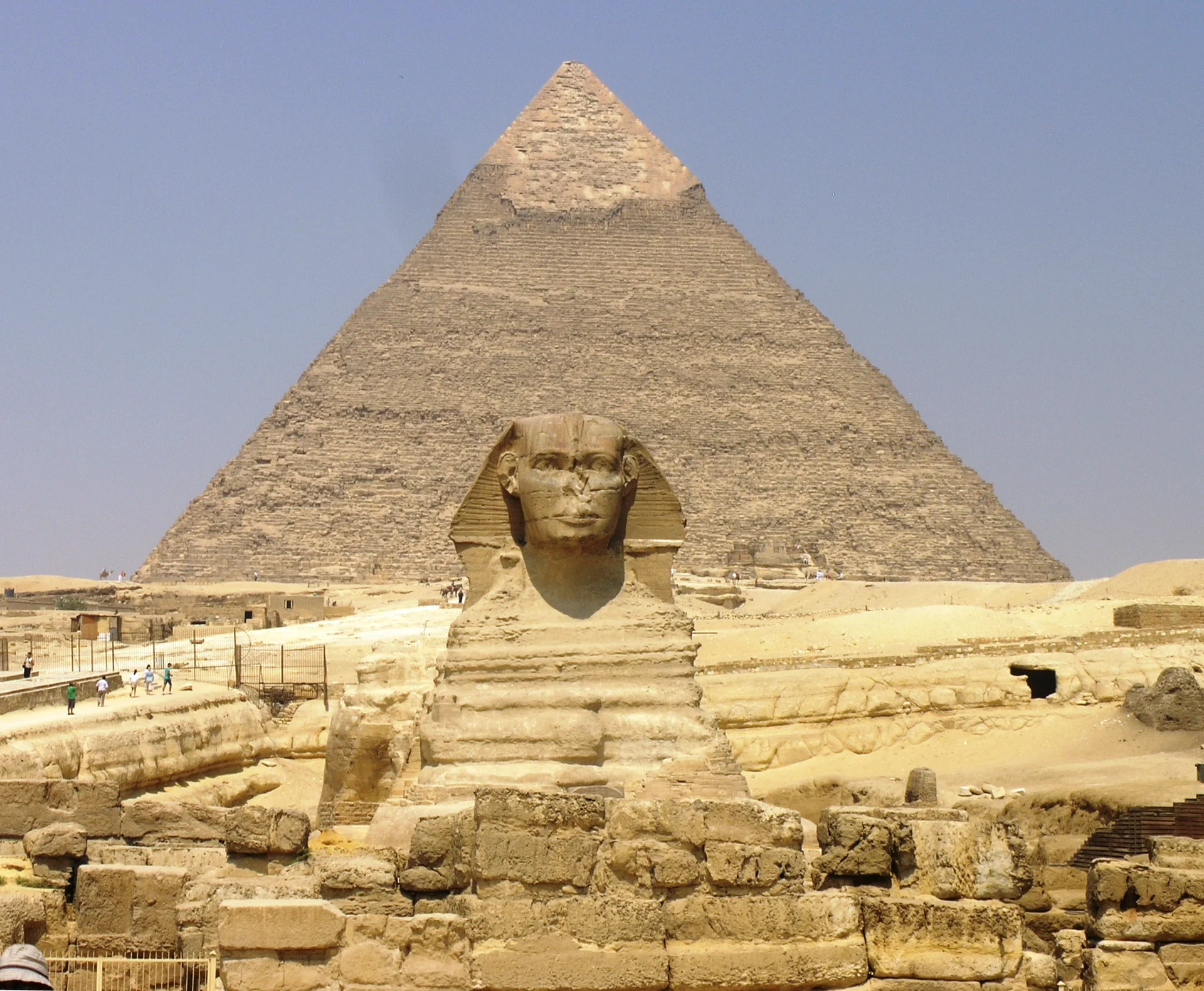
Great Sphinx and Giza Plateau (Giza)
Encounter the world's largest monolith statue, carved from bedrock c. 2500 BCE during Khafre's reign. The Sphinx combines a lion's body symbolising royal power with a human head, creating Egypt's most recognisable monument at 73 metres long and 20 metres high. It guards Khafre's causeway alongside the three iconic pyramids—Khufu, Khafre, and Menkaure—that define the Giza Plateau. The weathered limestone reveals millennia of desert exposure whilst the Dream Stele between its paws records Thutmose IV's encounter. The Giza complex demonstrates the culmination of pyramid evolution, with sophisticated valley temples, causeways, and satellite pyramids forming complete royal funerary compounds. Despite tourist crowds, the scale and preservation create profound connection to ancient Egyptian achievement. Visit at sunrise for lighting and thinner crowds.
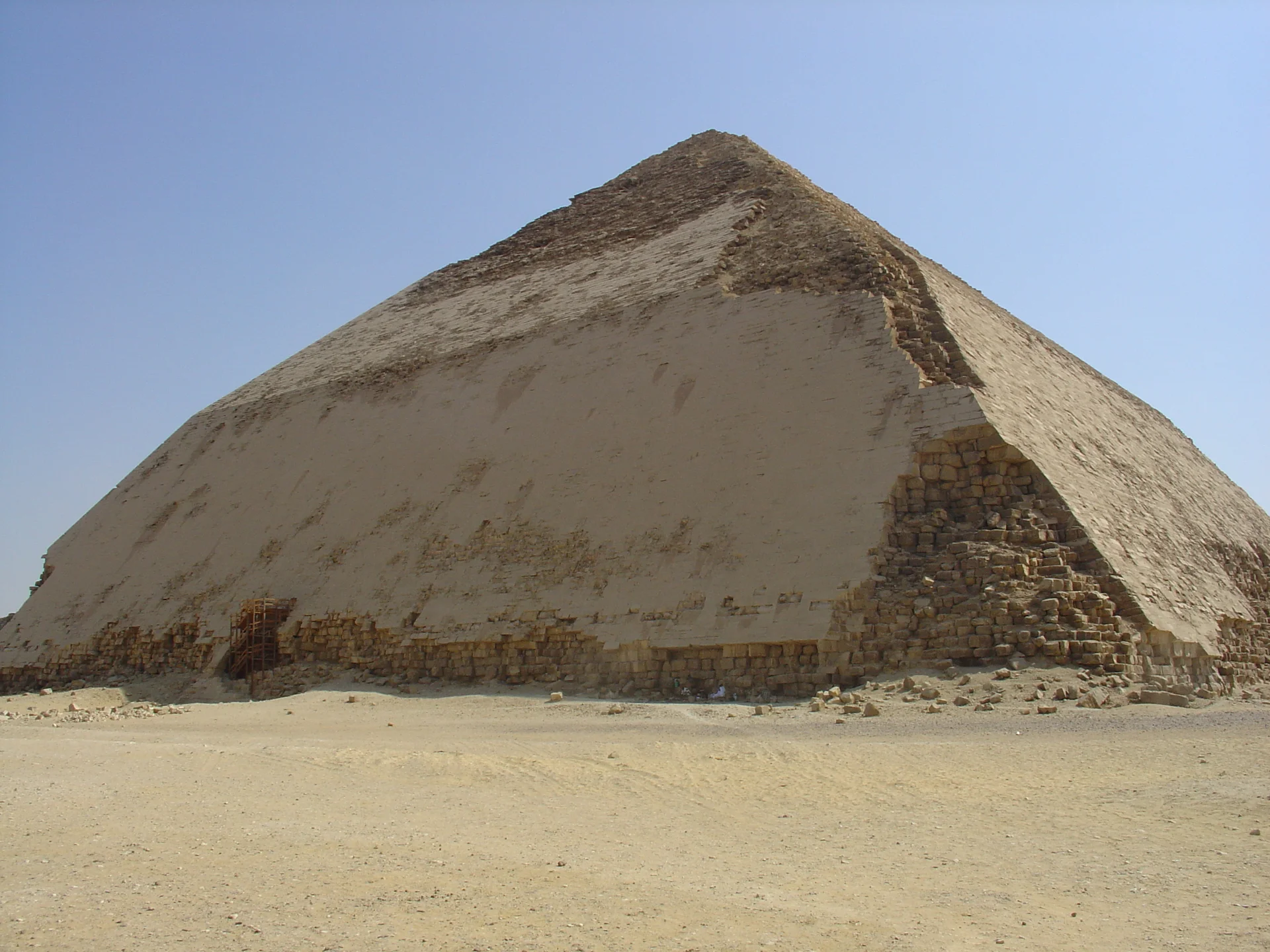
Bent Pyramid (Dahshur)
Explore Sneferu's revolutionary experimental pyramid, built c. 2600 BCE, where engineers changed the construction angle mid-build, creating its distinctive bent profile. This architectural anomaly documents the critical learning phase between stepped and true pyramids—the lower section rises at 54 degrees before shifting to 43 degrees. Remarkably, the Bent Pyramid retains most of its original polished Tura limestone casing, offering a rare glimpse of how all pyramids once gleamed. The pyramid's dual interior chamber system, recently reopened after 54 years, provides intimate exploration without Giza's crowds. A satellite pyramid nearby demonstrates continued experimentation. Dahshur's peaceful setting allows contemplative appreciation of the innovation that enabled later perfection at Giza.
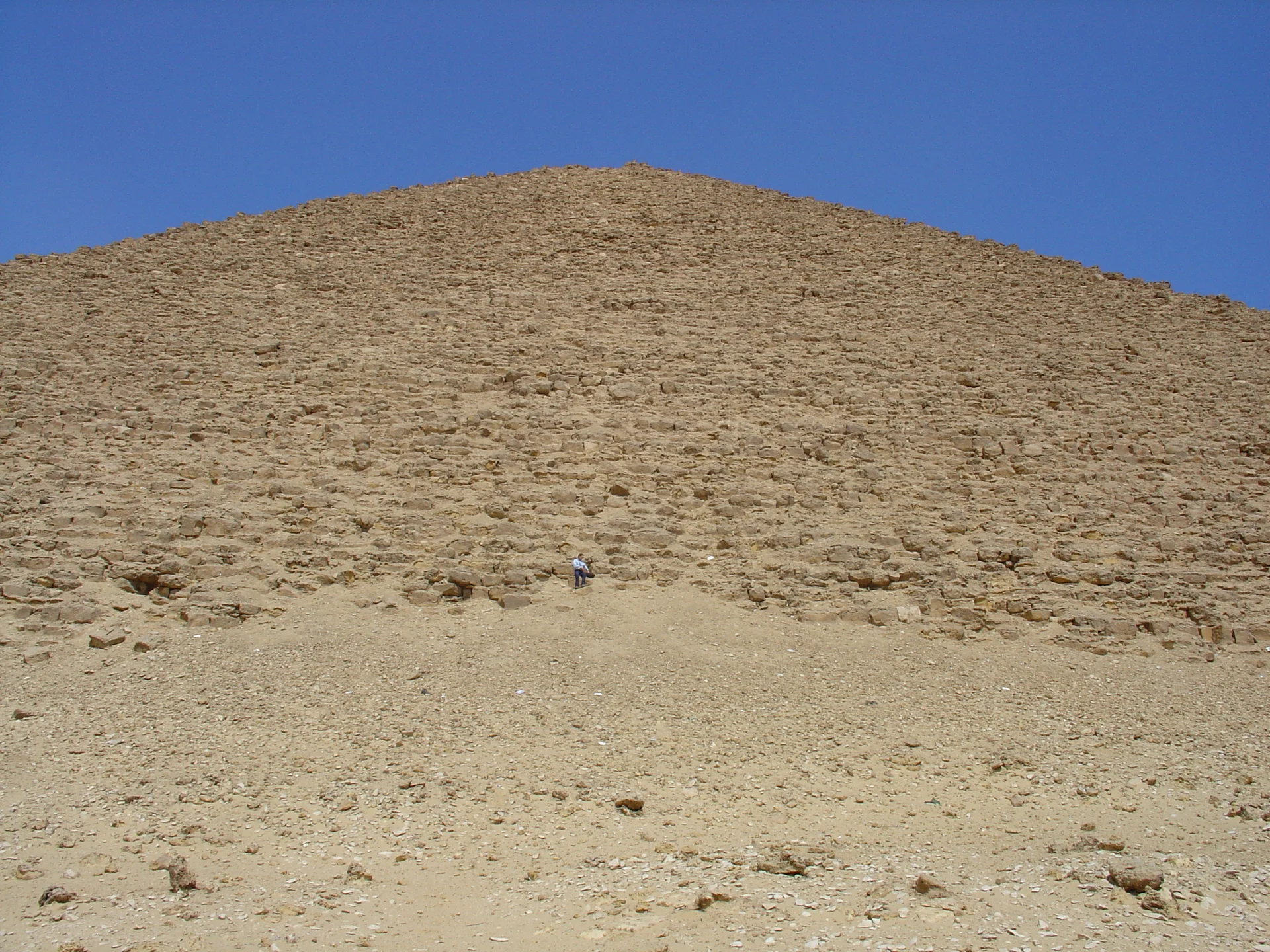
Red Pyramid (Dahshur)
Ascend Egypt's first successful true smooth-sided pyramid, built by Sneferu c. 2590 BCE after learning from the Bent Pyramid's challenges. This 105-metre monument demonstrates the mastered geometry enabling Giza's construction, with a consistent 43-degree angle—the same "safe" angle from the Bent Pyramid's upper section. Named for the rusty-red limestone exposed after its white Tura casing was removed for Cairo construction, the interior remains remarkably accessible. A steep 63-metre passage leads to three spectacular corbelled chambers demonstrating sophisticated vaulting. The chambers' scale and preservation provide exceptional examples of Old Kingdom architecture, whilst the absence of crowds offers contemplative exploration impossible at Giza. As Egypt's third-largest pyramid, it represents the crucial transitional achievement bridging experimental and perfected construction.
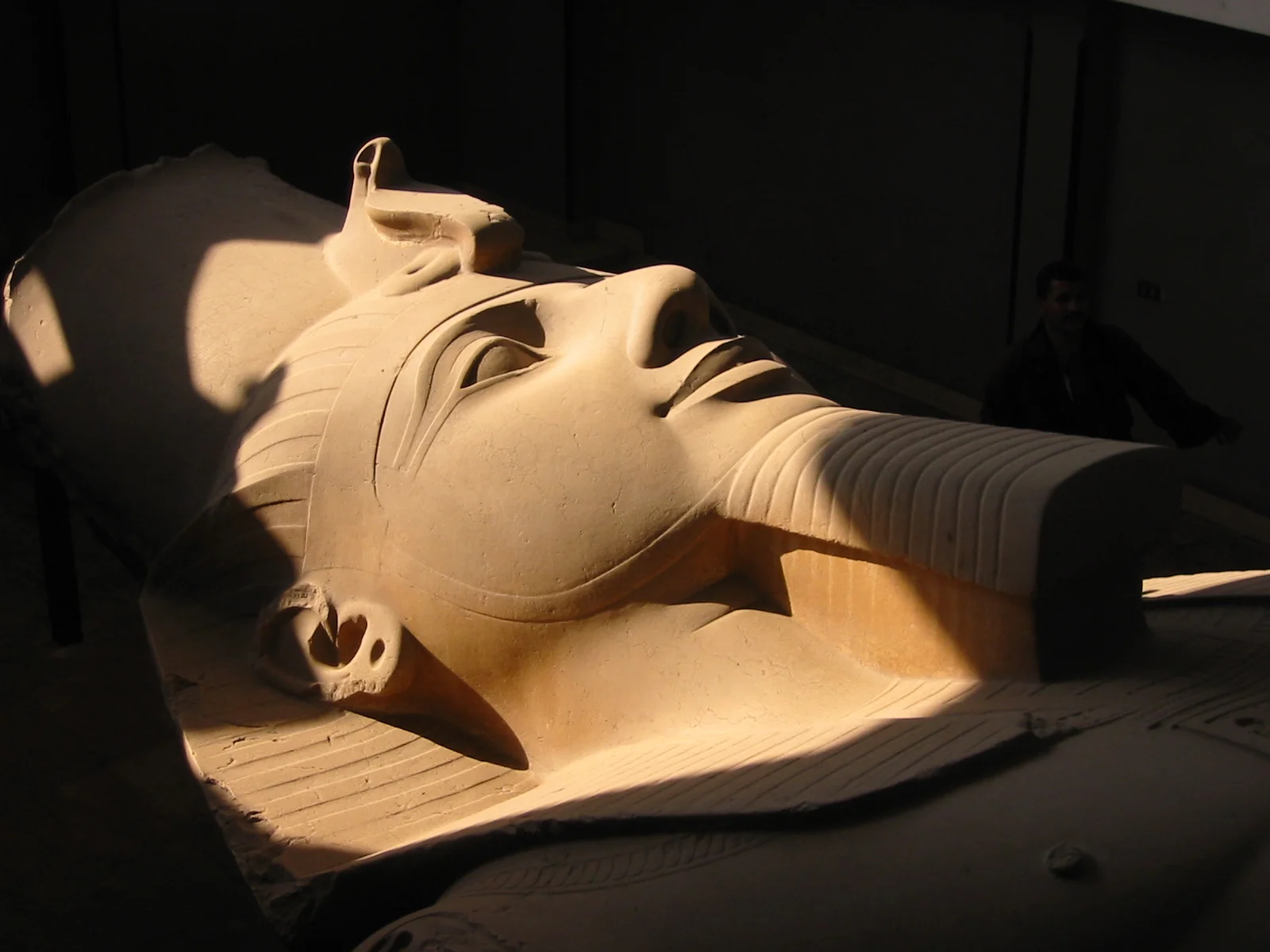
Memphis Ruins and Museum (Mit Rahina)
Explore the fragmentary remains of Egypt's ancient capital, founded c. 3100 BCE and serving as the political centre for over 2,000 years. Though little survives of the vast city—its temples, palaces, and walls dismantled for later construction—the open-air museum preserves monuments including the colossal limestone statue of Ramesses II prostrate, and the alabaster sphinx dating to the New Kingdom. The 10-metre Ramesses colossus demonstrates royal sculptural grandeur whilst hieroglyphic inscriptions reveal titulary and achievements. A small museum displays additional statuary and architectural fragments from the ruins. Memphis provides essential historical context for the surrounding necropolis, revealing the living city whose pharaohs and nobles populated the pyramid fields. The site's obscurity compared to the pyramids offers exploration of Egypt's administrative heart.
Location & Planning
Access from Cairo via private driver, organised tours, or hired car. Each location requires separate tickets. Most hotels arrange multi-site tours. Egyptologist guides recommended for historical context and navigating vendors.
Loading map...
Frequently Asked Questions
A 30-kilometre archaeological landscape encompassing 38+ pyramids, ancient capital Memphis, and 9,000+ tombs. This UNESCO site documents 3,000 years of Egyptian civilisation from Saqqara's first stone pyramid through Dahshur's experiments to Giza's Great Pyramid—the sole surviving Ancient Wonder.
Third Dynasty Pharaoh Djoser built Saqqara's Step Pyramid. Fourth Dynasty Pharaoh Sneferu constructed Dahshur's Bent and Red Pyramids. His successors Khufu, Khafre, and Menkaure built Giza's three iconic pyramids. Each required 20-30 years with thousands of workers.
Sites span 30 kilometres requiring reliable transportation. Options include private driver with Egyptologist guide, organised multi-site tours, or hired car. Each location requires separate entry tickets. Most Cairo hotels arrange comprehensive multi-day tours covering all sites.
October-April offers ideal weather across all sites. Plan minimum two days: one for Saqqara and Memphis, another for Dahshur and Giza. Early morning visits avoid heat and crowds whilst providing optimal photography lighting conditions at pyramids.
Yes, each site requires separate tickets purchased with Egyptian pounds. Red Pyramid at Dahshur offers accessible chambers with fewer crowds. Bent Pyramid recently reopened. Saqqara's Step Pyramid complex includes underground chambers. Buy tickets on-site at each location.
Pack lightweight clothing, wide-brimmed hat, high-SPF sunscreen, comfortable walking shoes, and abundant water for desert conditions. Bring Egyptian pounds for tickets and interior access fees. Camera equipment with dust protection recommended for preserving photography gear.
UNESCO World Heritage Criteria
Inscribed in 1979, this site meets 3 of UNESCO's 10 criteria for Outstanding Universal Value
Criterion (i): Masterpiece of human creative genius
The pyramids of Giza represent absolute masterpieces of human creative genius through the Great Pyramid's precise astronomical alignments and mathematical proportions, revolutionary construction techniques moving 2.3 million limestone blocks averaging 2.5 tonnes each, and architectural innovations establishing monumental stone building principles for millennia.
Criterion (iii): Testimony to cultural tradition
Memphis and its necropolis provide exceptional testimony to ancient Egyptian civilisation during the Old and Middle Kingdoms, representing the world's first major stone buildings through pyramid complexes demonstrating pharaonic power, religious beliefs about afterlife, and sophisticated administrative capabilities sustaining vast construction projects.
Criterion (vi): Associated with events/traditions/ideas/beliefs/artistic works
The site remains directly associated with ancient Egyptian funerary beliefs and the concept of divine kingship, representing ideas about eternal life, the soul's journey through the afterlife, and pharaohs as living gods that profoundly influenced subsequent religious and philosophical traditions throughout Mediterranean civilisations.
Historical Context
Early Dynastic & Memphis Founding (c. 3100-2670 BCE)
King Menes unified Egypt and established Memphis as capital, initiating the necropolis tradition along the Nile. Early rulers built mud-brick mastabas that evolved toward monumental stone construction, setting foundations for revolutionary architectural developments under the Third Dynasty.
Third Dynasty Revolution (c. 2670-2600 BCE)
Architect Imhotep designed the Step Pyramid for Pharaoh Djoser at Saqqara, creating the world's first monumental stone building. This revolutionary six-step structure rising 62 metres established pyramid construction principles and launched Egyptian pyramid architecture, transforming funerary architecture from mud-brick to stone.
Fourth Dynasty Perfection (c. 2600-2500 BCE)
Pharaoh Sneferu built experimental pyramids at Dahshur—the Bent and Red Pyramids—perfecting smooth-sided geometry through trial and refinement. His successors Khufu, Khafre, and Menkaure constructed Giza's three iconic pyramids representing pyramid building's pinnacle, achieving unprecedented engineering precision and demonstrating mastery of monumental stone construction techniques.
Later Old Kingdom & Decline (c. 2500-2181 BCE)
Fifth and Sixth Dynasty pharaohs continued pyramid construction at Saqqara and Abusir on smaller scale, introducing pyramid texts—the earliest religious inscriptions. The necropolis remained active as sacred burial ground for royalty and nobility throughout the Old Kingdom, maintaining its status as Egypt's primary funerary landscape.
Medieval Period (641-1517 CE)
Under Islamic rule, pyramids' exterior casing stones were repurposed for Cairo construction, particularly after earthquakes damaged structures. Memphis ruins were extensively quarried for building materials throughout medieval period, reducing the ancient capital to fragmented remains. Despite systematic quarrying, the massive pyramid cores endured, maintaining their commanding presence over the landscape.
Modern Archaeological Era (1798-present)
Napoleon's 1798 expedition initiated scientific study, documenting monuments systematically. Throughout 19th-20th centuries, archaeological excavation revealed construction techniques, interior chambers, and Memphis ruins whilst establishing Egypt's pharaonic chronology. UNESCO designated the entire necropolis World Heritage Site in 1979, recognising outstanding universal value and launching comprehensive conservation programmes protecting this extraordinary landscape.
Conservation & Protection
Current Conservation Status
Comprehensive conservation programmes protect the 30-kilometre necropolis through international collaboration, advanced monitoring technology, and differentiated site management addressing varied preservation challenges across Memphis, Saqqara, Giza, and Dahshur.
Conservation Challenges
- Limestone erosion from Cairo air pollution and environmental factors, with Giza experiencing greatest pressure whilst Dahshur faces weathering concerns
- Tourism pressure concentrated at Giza requiring sophisticated crowd management, whilst ensuring adequate infrastructure and security at less-visited Saqqara, Dahshur, and Memphis sites
- Urban encroachment threatening the necropolis buffer zones as Cairo expands westward, with development pressure affecting archaeological context and site protection
- Differential preservation needs across diverse monument types—from Memphis fragmented ruins requiring stabilisation to Dahshur's intact limestone casings demanding specialised protection
Active Conservation Efforts
- Advanced documentation using 3D scanning, photogrammetry, and radar imaging creating comprehensive digital records of all structures across the necropolis for monitoring and research
- Site-specific visitor management programmes limiting pyramid interior access, installing protective infrastructure, and directing tourist flow toward underutilised sites like Dahshur
- International conservation partnerships including UNESCO, national archaeology authorities, and academic institutions bringing expertise, restoration techniques, and funding for ongoing preservation
- Comprehensive archaeological research continuing excavation and documentation whilst training Egyptian specialists in conservation techniques and heritage management across multiple sites
Image & Content Attribution
Research & Content Sources
Photography & Visual Media
Last updated: 7 October 2025